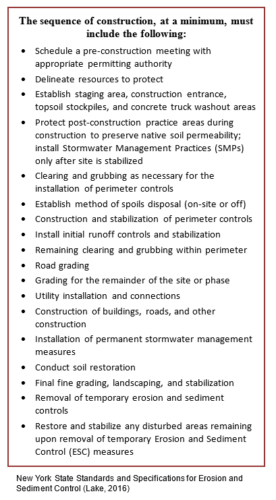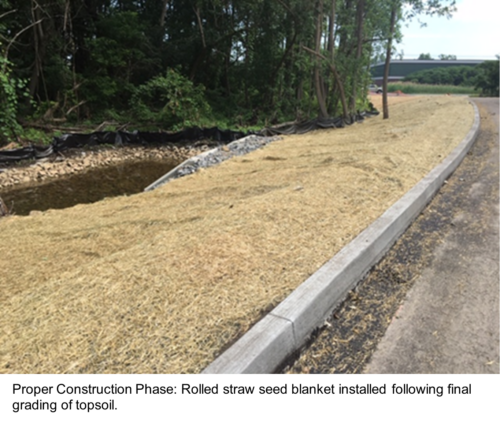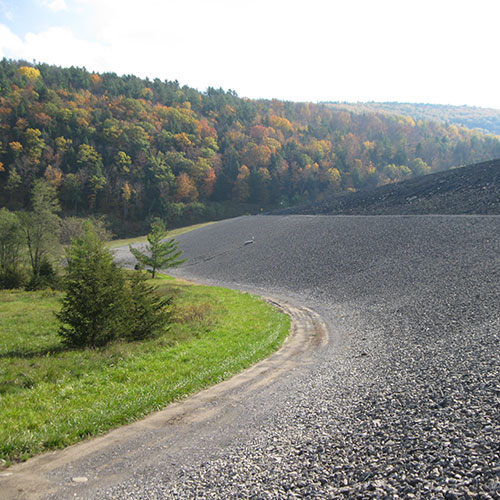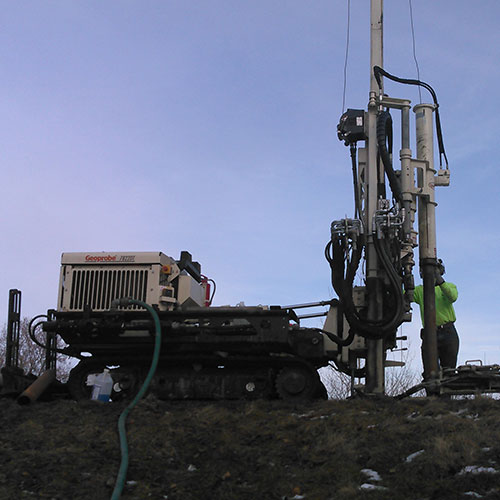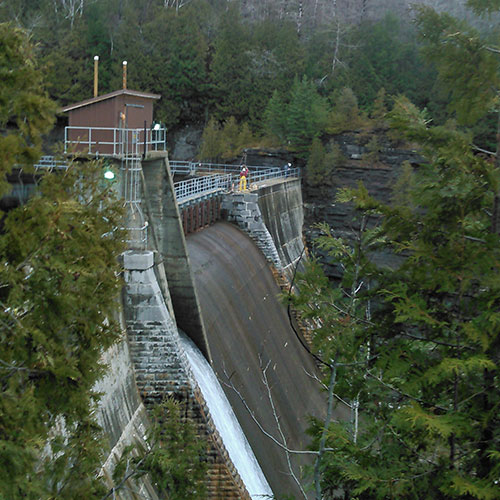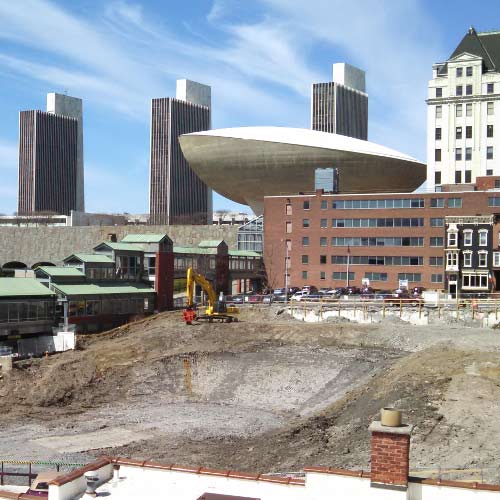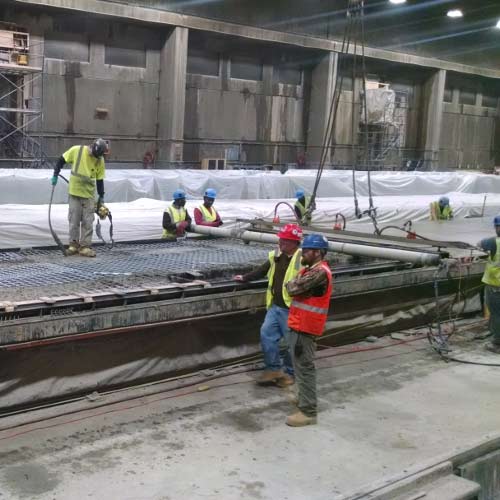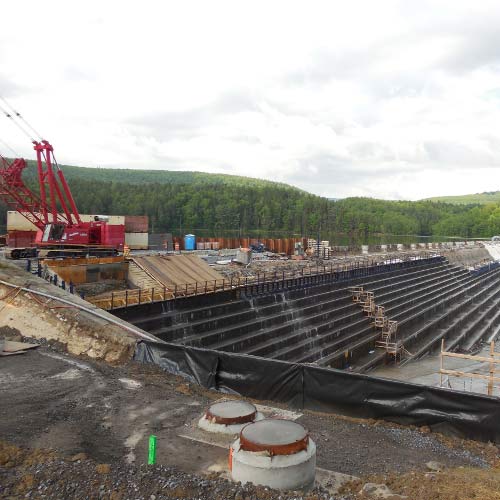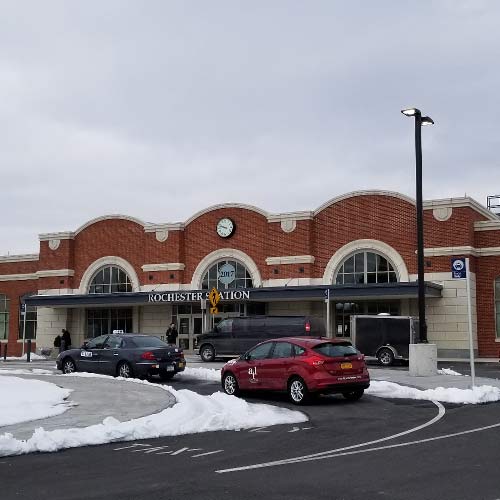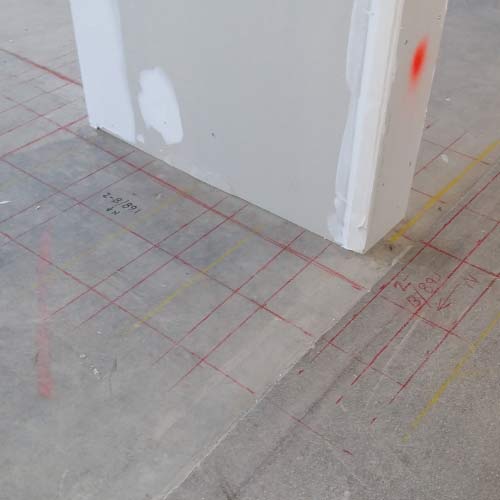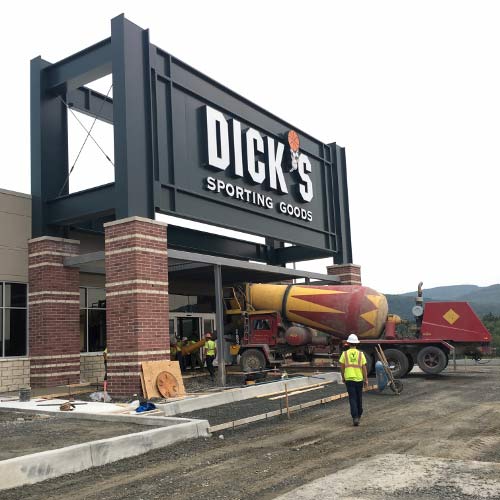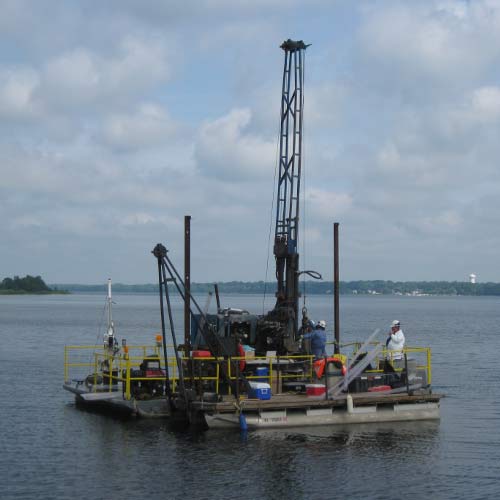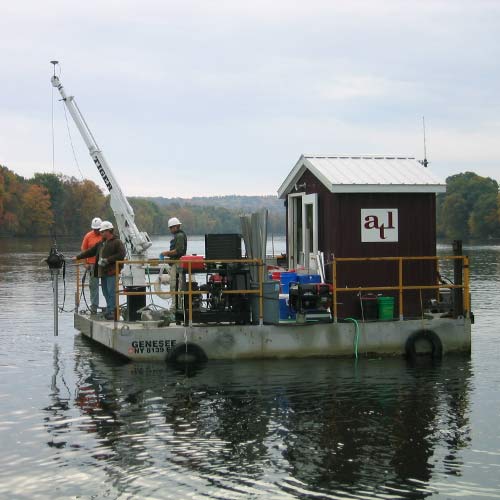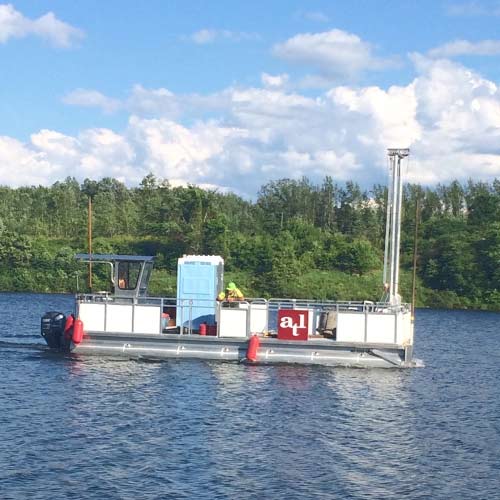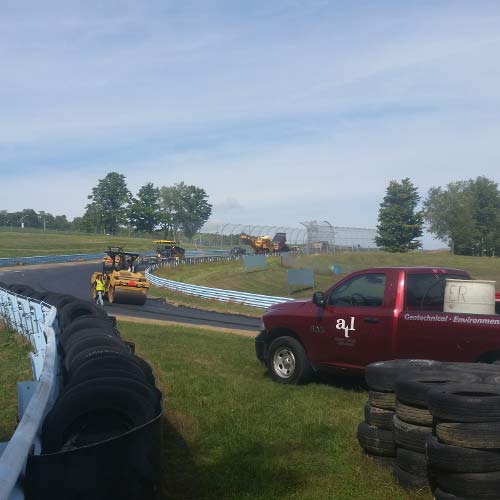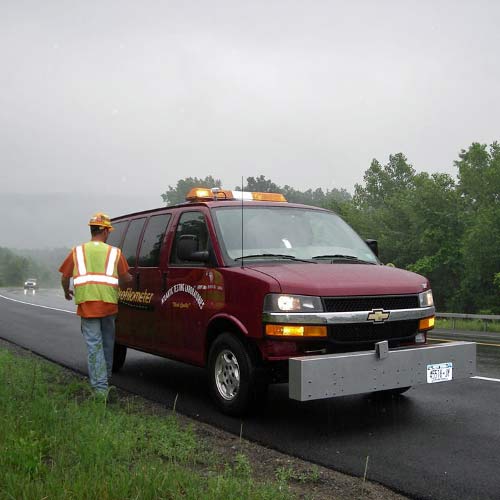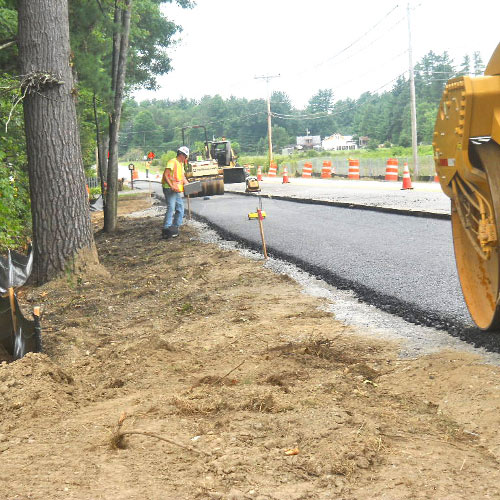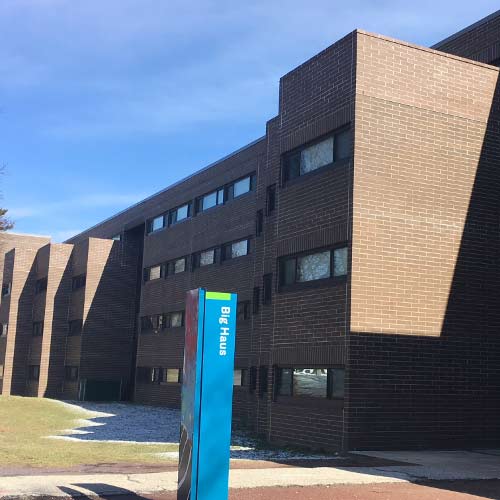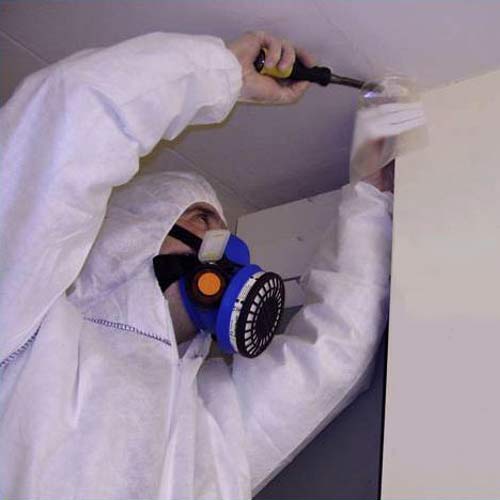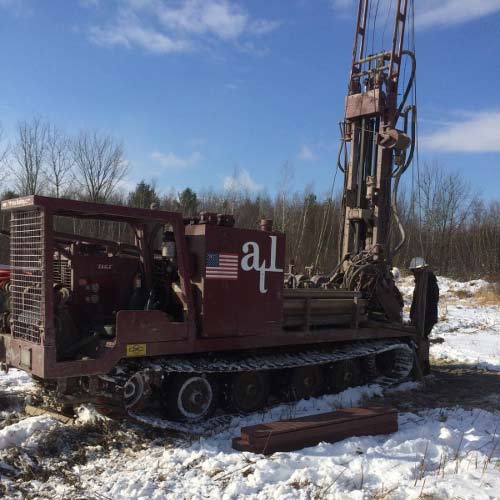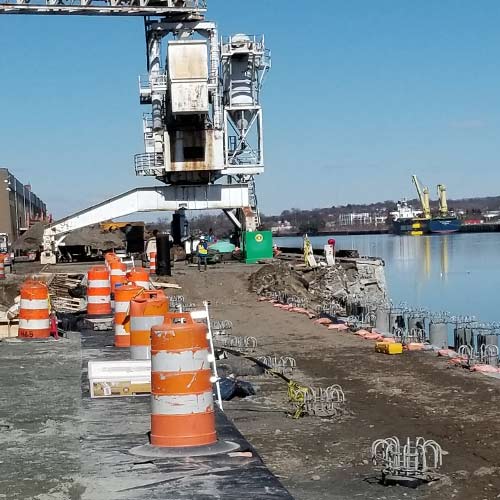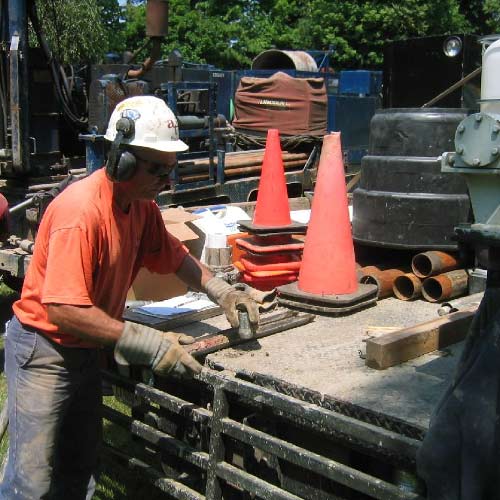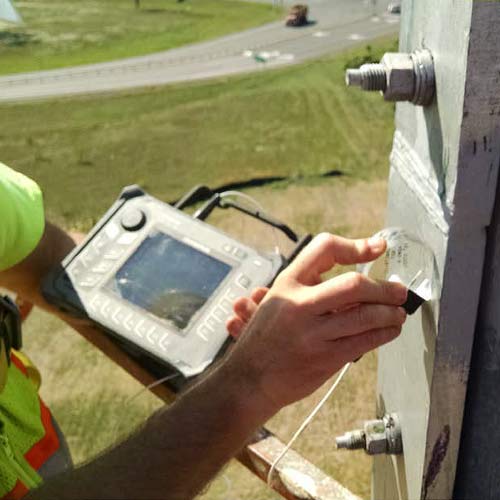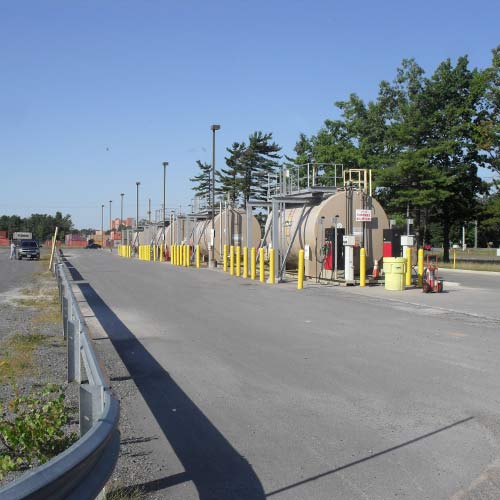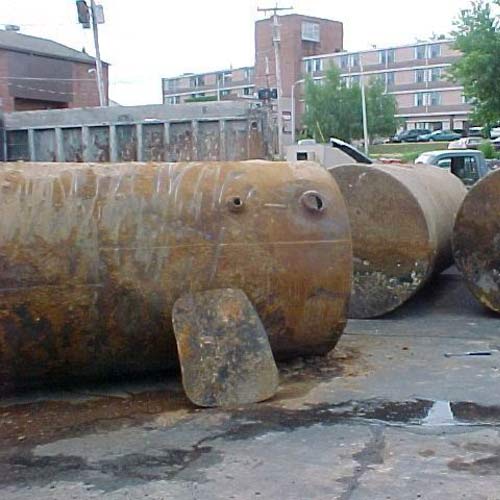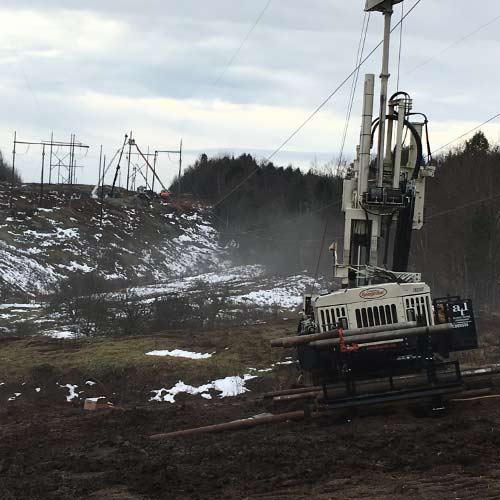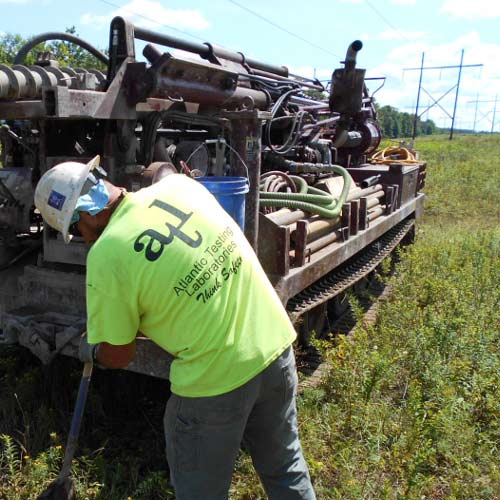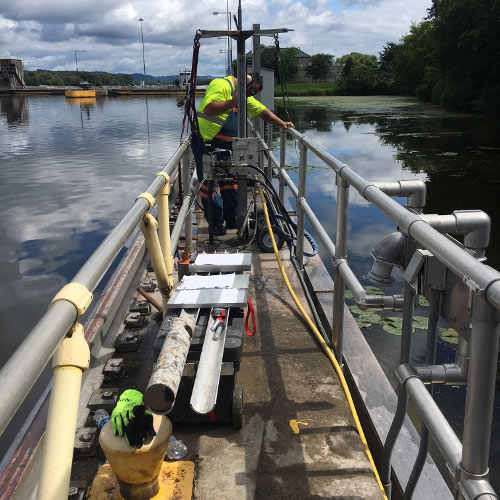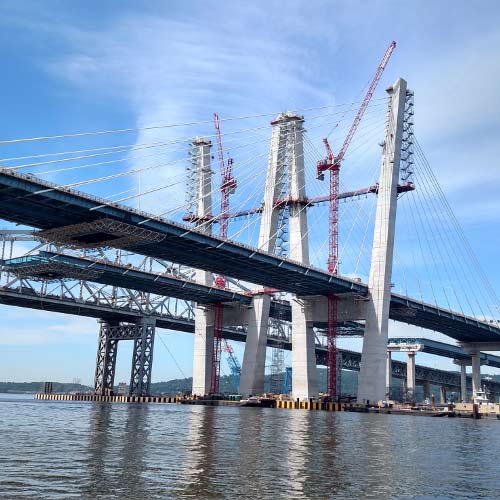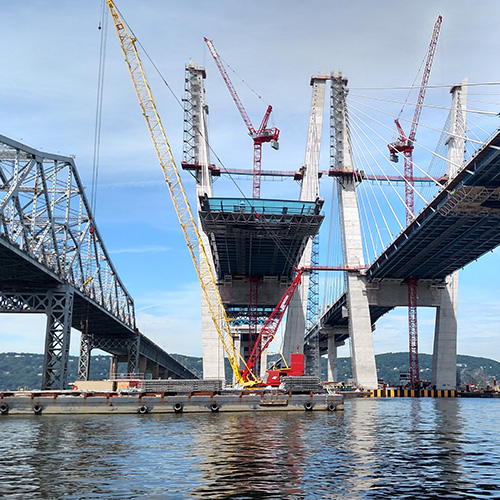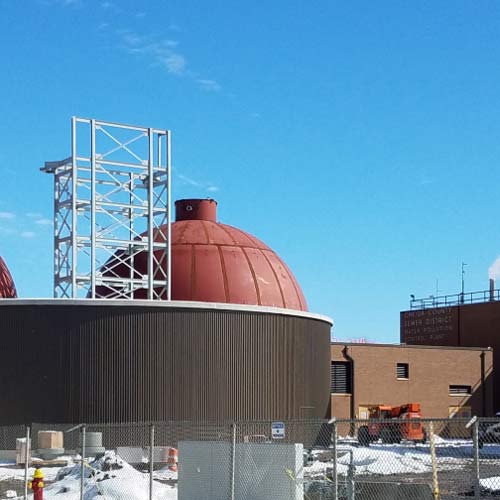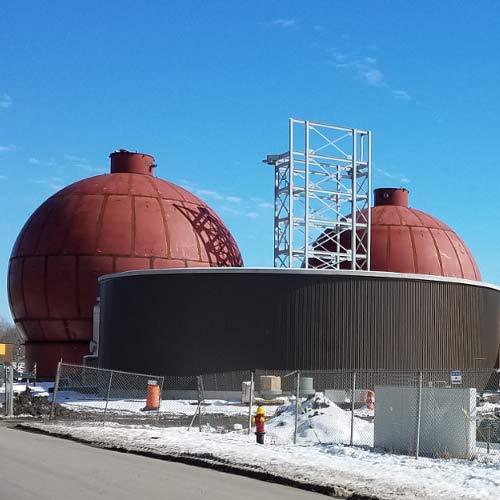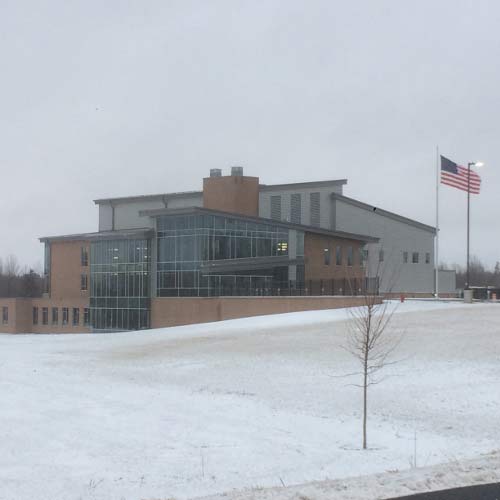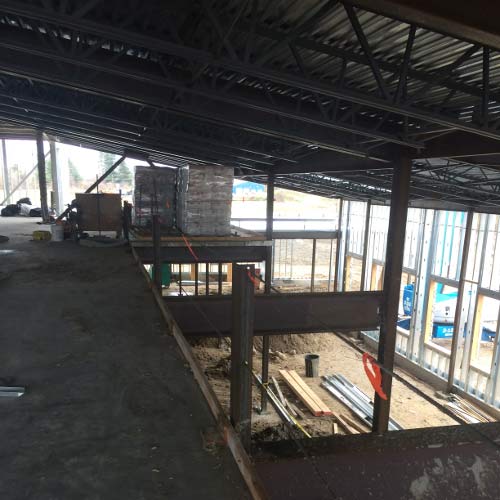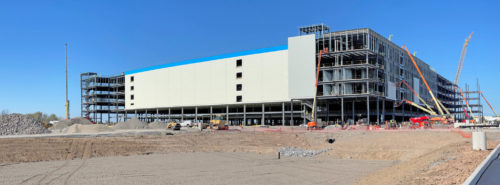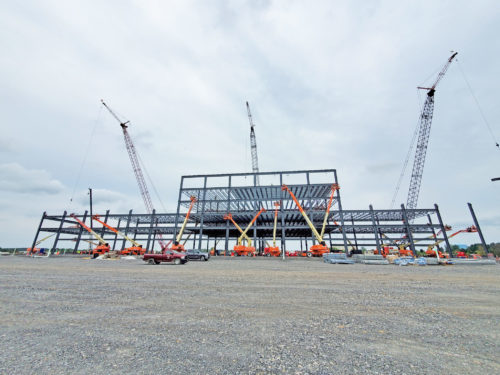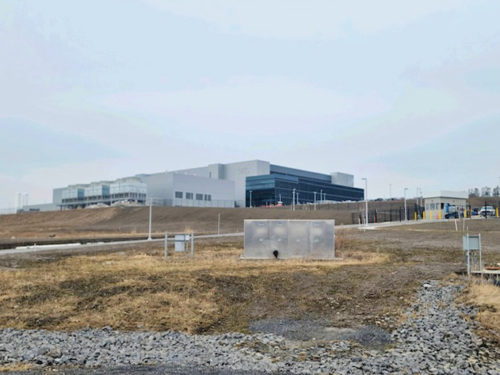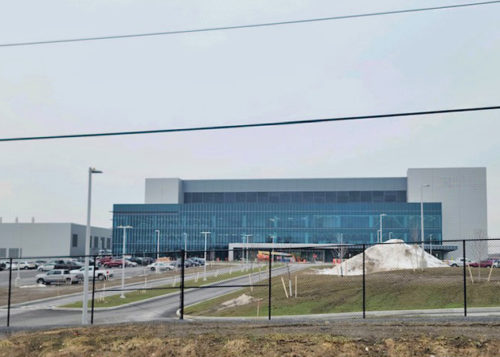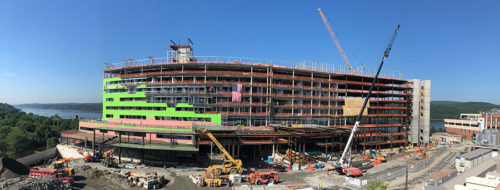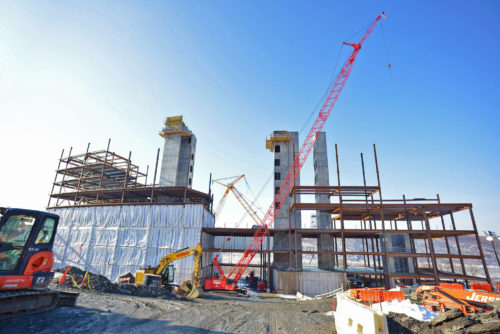Click the following link to view the PDF of this paper: Defining SWPPP Required Construction Phasing Plans

Kasey J. Garrand, IG
Senior Project Manager
Atlantic Testing Laboratories
Within New York State, construction projects that meet specific soil disturbance parameters are required to obtain SPDES (State Pollutant Discharge Elimination System) Permit approval by the New York State Department of Environmental Conservation (NYSDEC) prior to soil disturbance activity. The permit includes the applicant’s Notice of Intent (NOI) letter, the NYSDEC’s NOI acknowledgment letter, as well as the MS4 acceptance form, if applicable to the project. Requisite to the SPDES permit, a Stormwater Pollution Prevention Plan (SWPPP) is designed primarily to manage stormwater and limit discharge of pollutants that may result in water quality violations. One of the elements that must be incorporated into a SWPPP is the construction phasing plan, sometimes referred to as sequence of construction.
The construction phasing plan outlines the predetermined order of operations that must take place in planning for and executing a successful SWPPP. Steps in the sequence can range from “permit submission and acceptance” prior to the start of the project to “removal of temporary stormwater controls” when permanent stabilization has been achieved following completion of the project. The various steps within the phasing plan act as a guide for the maintenance, timing, and installation/removal of various controls based on what phase of the project is being executed. The New York State Standards and Specifications for Erosion and Sediment Control, Section 2, provides the list of necessary components to be included in the construction sequence (Lake, 2016) (1).
The size and scope of the construction phasing plan can vary widely based on the size and complexity of the project. Working in phases reduces the amount of area disturbed at one time and makes erosion and sediment control more manageable. Elements within the construction phasing plan are sometimes categorized into “Pre-Construction”, “Construction”, and “Stabilization and Monitoring” sections.
A detailed construction phasing plan is designed to establish the order in which different aspects of the SWPPP are to be implemented. Additionally, the plan serves as an important reference for stormwater inspectors, as erosion and sediment controls may be installed during different stages of a project. A construction phasing plan is a valuable component to any SWPPP and adherence to it reduces potential impacts from construction-generated pollutants.
If you have a project that includes a Construction General Permit for Stormwater, ATL, a WBE certified company, has Qualified Inspectors, working under the direct supervision of ATL’s Licensed Professional Engineers, located throughout New York State to perform SWPPP Inspections as dictated by your General Permit.
For more information, contact Kasey Garrand, IG at 315-563-5878, info@atlantictesting.com, or visit www.AtlanticTesting.com.
(1) Donald W. Lake Jr., November 2016, New York State Standards and Specifications for Erosion and Sediment Control: Erosion Control Planning and Site Management, p. 2.15
|
ASSOCIATED SERVICES |
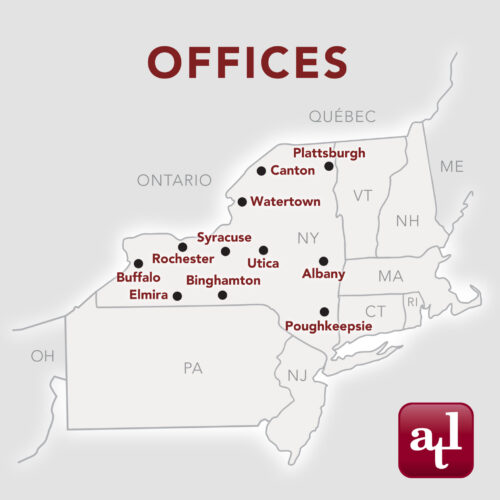 |

